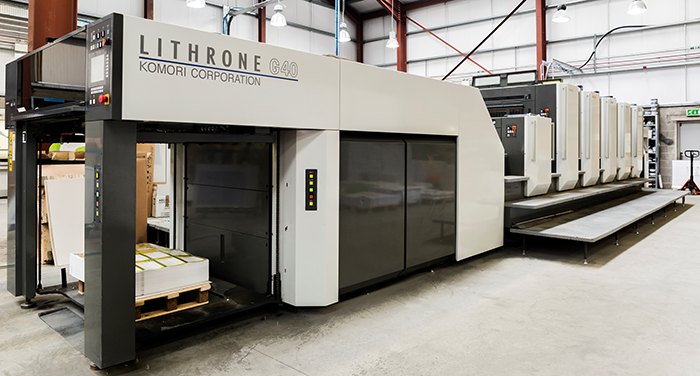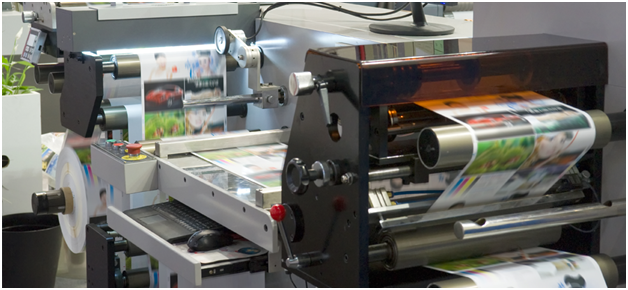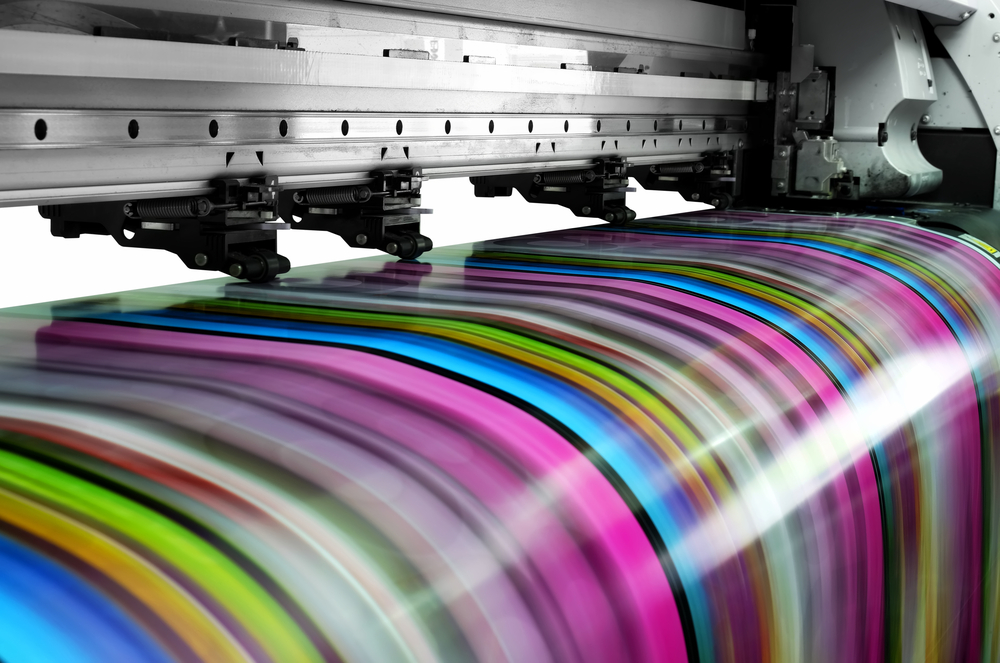How litho printing Outperforms Digital Printing in Quality
Wiki Article
The Important Overview to Recognizing Litho Printing and Its Applications
Litho printing stands as a significant method in the printing sector, rooted in the concepts of oil and water repulsion. This technique not just provides high-quality pictures however also deals with various industrial requirements. Its applications vary from advertising and marketing products to packaging, showcasing its versatility. As the sector adapts to new modern technologies, the evolution of litho printing questions concerning its future and significance in a digital landscape. What lies in advance for this enduring approach?
What Is Litho Printing?
Litho printing, a widely utilized printing method, depends on the concept of oil and water repulsion. This approach uses a flat printing surface area, commonly a steel plate, which is dealt with to guarantee that the picture locations are responsive to oil-based inks while the non-image locations repel them. The procedure begins with the production of an image on the plate, commonly via drawing or photographic means. Once the image is prepared, the plate is moistened with water, adhered to by the application of ink. The ink sticks only to the picture areas, enabling for precise reproduction of graphics and message. Litho printing is preferred for its capacity to create top quality prints with fine detail and vibrant shades. It is typically made use of in industrial applications, consisting of newspapers, publications, and packaging, showcasing its versatility and effectiveness in satisfying the demands of modern-day printing.The History of Lithography
Lithography is a modern-day printing staple, its beginnings map back to the late 18th century when German playwright Alois Senefelder developed the method in 1796. Established as an approach for reproducing texts and pictures, lithography used a level stone surface area to produce prints via a chemical procedure. Senefelder's advancement permitted for higher flexibility and creative expression contrasted to previous printing methods.By the 19th century, lithography obtained widespread acceptance, coming to be a popular option among artists and authors. It allowed the mass production of images, maps, and posters, notably influencing the printing industry. The method even more progressed with the intro of lithographic presses, boosting performance and quality.As the commercial revolution progressed, lithography adapted to fulfill the needs of commercial printing, paving the means for contemporary applications. Today, it remains a necessary technique in various markets, consisting of publishing, packaging, and great art recreation.Exactly How Litho Printing Functions
An essential feature of litho printing is its dependence on the principle of oil and water repulsion - litho printing. In this process, images are transferred from a level surface area, usually a steel or polymer plate, to paper. Home plate is treated to make sure that the areas planned for printing bring in ink, while the non-image locations repel it as a result of their affinity for water. The printing starts by dampening home plate with water, which sticks to the non-image areas. Subsequently, an oil-based ink is used, sticking just to the designated photo areas.When home plate enters contact with the substrate, the ink is transferred, creating a print. The litho printing process can generating premium images with fine detail. It is usually used for mass production as a result of its efficiency and consistency, making it a preferred method for commercial printing applicationsBenefits of Litho Printing
One noteworthy advantage of litho printing is its capacity to produce top quality photos constantly, making it an ideal selection for business projects. This printing method makes use of a flat printing plate, guaranteeing even ink distribution and sharp details. Litho printing is likewise renowned for its color precision, making it possible for lively and true-to-life recreations, which is important for branding materials.Moreover, it supports a large range of substratums, consisting of paper, cardboard, and even specific plastics, boosting its versatility. The process is affordable for huge runs, as economies of range minimize per-unit expenses. On top of that, litho printing has a quick turn-around time, allowing for effective production schedules.Its longevity also implies that published products withstand fading, making certain that the last item keeps its visual appeal with time. In general, these advantages make litho publishing a recommended option across different markets, contributing to its enduring popularity.
Applications of Litho Printing in Organization
As companies significantly look for reputable and top notch printing remedies, litho printing arises as an essential gamer in numerous applications. This strategy is especially preferred for generating advertising and marketing materials such as sales brochures, leaflets, and directories, many thanks to its capability to supply dynamic shades and sharp pictures. Additionally, litho printing is frequently employed for packaging remedies, allowing business to develop eye-catching tags and boxes that improve item appeal.In the industry of corporate identity, litho printing contributes in creating specialist stationery, service cards, and advertising merchandise, which aid strengthen brand recognition. Moreover, it is extensively made use of in the posting sector for printed products such as books and publications, where regular quality is vital. In general, litho printing's versatility and efficiency make it an essential tool for services aiming to interact effectively and develop a solid market visibility.Artistic Uses of Litho Printing
Litho printing functions as a functional medium in the domain name of printmaking, offering musicians a distinct approach to express their imagination. This strategy enables a variety of imaginative applications, from conventional prints to contemporary analyses. click for info By exploring the subtleties of litho printing, artists can harness its unique high qualities to enhance their job.
Printmaking Methods Overview
The virtuosity of printmaking encompasses a varied array of methods, with litho printing standing apart for its one-of-a-kind method to picture production. This approach counts on the principle of oil and water repulsion, enabling musicians to attract directly onto a sedimentary rock or steel plate with a greasy medium. Once prepared, home plate is dampened and tattooed, moving the picture onto paper with stress. Litho printing is commemorated for its capacity to create great information and rich tonal variations, making it a preferred option among musicians. Additionally, the process is versatile, suiting both traditional techniques and contemporary adjustments. This adaptability permits litho printing to bridge different creative designs, enriching the printmaking landscape with its unique qualities and capacities.Distinct Artistic Applications
Exploring the unique imaginative applications of litho printing exposes its impressive adaptability in numerous imaginative areas. Musicians make use of litho printing to create complex styles and textures, enabling meaningful and comprehensive works. The process promotes the recreation of brilliant shades, making it perfect for images and art prints. Many contemporary artists welcome lithography for its ability to integrate standard techniques with modern-day principles, leading to cutting-edge artwork. In addition, litho printing is typically utilized in the manufacturing of restricted edition prints, improving their worth and charm. The tactile top quality of litho prints adds a distinct dimension, bring in collectors and art enthusiasts alike. In general, litho printing stays a substantial tool for creative expression, connecting traditional techniques with contemporary imagination.The Future of Litho Printing in a Digital World
As the printing sector progresses, litho printing faces the challenge of integrating digital technologies to continue to be pertinent. Approaches focused on digital combination, together with patterns in sustainability and advancement, will form its future - litho printing. Understanding these dynamics is necessary for market stakeholders wanting to adapt to a quickly altering landscapeDigital Integration Strategies
A growing variety of litho printing companies are welcoming electronic combination approaches to remain competitive in a progressively electronic landscape. By incorporating electronic process, these firms can streamline procedures and enhance efficiency. This integration enables real-time data management and improved communication in between divisions, decreasing turnaround times considerably. Furthermore, digital devices allow far better customization and personalization of printed materials, accommodating details consumer needs. Firms are likewise taking on crossbreed printing solutions that integrate standard litho methods with electronic modern technologies, supplying flexibility in manufacturing. Leveraging information analytics helps in understanding market trends and customer preferences, allowing companies to make enlightened decisions. In general, electronic assimilation is ending up being crucial for litho printing companies intending to innovate and respond to developing market demands.Sustainability and Technology Trends

Often Asked Questions
What Materials Are Generally Made Use Of in Litho Printing?
The products typically used in litho printing include aluminum plates, ink, water, and paper. Each part plays a necessary role in the printing process, ensuring top notch image recreation and reliable transfer of ink onto the substrate.Just How Does Litho Printing Compare to Digital Printing?
Litho printing supplies premium shade consistency and top quality for huge runs, while electronic printing succeeds in brief runs and customization. Each approach has unique advantages, providing to various needs based on production range and cost-efficiency.What Is the Common Turn-around Time for Litho Printing Projects?
The typical turn-around time for litho printing tasks varies, usually ranging from a couple of days to a number of weeks. Elements influencing this timeframe include job complexity, amount, and needed ending up procedures, impacting general production timetables.Can Litho Printing Accommodate Customized Sizes and Formats?
Litho printing can without a doubt accommodate custom-made sizes and layouts, enabling versatility in design. This flexibility makes it possible for customers to attain one-of-a-kind print results customized to their details needs, enhancing the total effectiveness of their jobs.What Are the Environmental Influences of Litho Printing?
see post The ecological effects of litho printing include resource intake, chemical usage, and waste generation. Developments in sustainable methods and eco-friendly materials are progressively minimizing these adverse effects, promoting a more eco responsible technique to printing.Report this wiki page